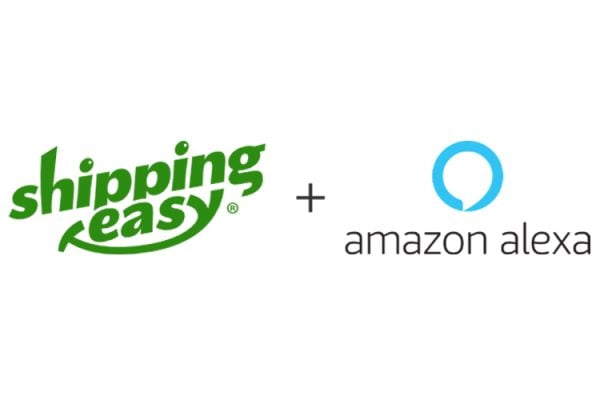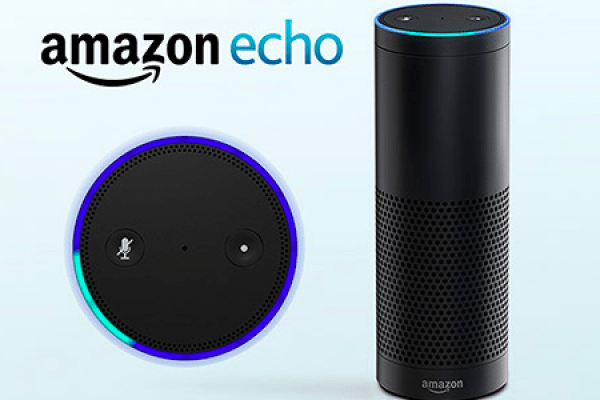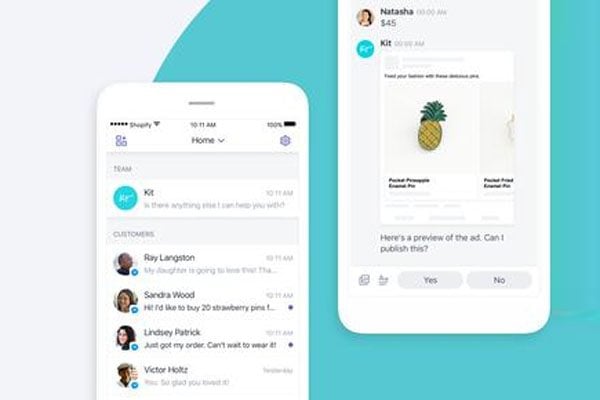Download or read online
This position paper on Virtual Assistants is available as a free download to read offline at your convenience, or carry on reading below.
Virtual Assistants
Virtual Assistants are playing an increasingly important part in the lives of millions of consumers around the world, often without us even realising that we’re using them. With some of the biggest Internet companies in the world selling millions of Virtual Assistant devices each year it’s only a matter of time before ecommerce becomes mainstream on them, which is why you see us regularly writing about them on Tamebay – A decade ago it was all about mobile, but we believe the next frontier for commerce will be the rise of the Virtual Assistant.
This article aims to define what a Voice Assistant is and trace their growth from inception through to the present day, identifying the most common Virtual Assistants consumers use today. Our main area of interest is how retailers can best adjust their strategies to capture sales from Virtual Assistants, so we will also illustrate the commercial value of Virtual Assistant owning consumers and how this translates to sales.
If we’re missing key information or you’d like more in depth information on any particular features, then do let us know and if you’re an expert in the field we’d love to hear from you.
Virtual Assistants – Definition
A Virtual Assistant is a software agent that can perform various tasks or actions, normally in response to a spoken command but many can also (or exclusively) respond to text input.
Some Virtual Assistants have very basic functionality such as pre-programmed responses (telephone auto responders) whilst others have the capability to perform Internet searches, play audio or multimedia and act as controls for smart devices such as home automation.
The five best known Virtual Assistants
-
Amazon Alexa
Launch Date: November 2014
Amazon Alexa debuted on the Amazon Echo which is now a range of products including the Echo (2nd Generation), Echo Dot (2nd Generation), Echo Plus, Echo Show, Echo Spot.
Echo connects to Alexa to play music, make calls, set music alarms and timers, ask questions, control smart home devices, and call or message hands-free and connect to other Echo devices in your home using just your voice. Alexa can check your calendar, weather, traffic, and sports scores, manage to-do and shopping lists, control your compatible smart lights, thermostats, garage doors, sprinklers
There are over 23,000 add on Alexa Skills.
-
Google Home
Launch Date: November 2016
Google Home is a smart speaker powered by Google Assistant available as Google Home or Google Home Mini formats.
You can listen to music, control playback of videos or photos, or receive news as well as control smart home devices.
There are less than 100 add on Google Home apps but Google has many capabilities built in
-
Microsoft Cortana
Launch Date: January 2015
Originally launched within Windows 10, Cortana has been released on a few standalone third-party devices.
Cortana responds to voice commands and results are powered by Microsoft’s Bing search engine.
There are 200+ add on Cortana Skills
-
Samsung Bixby
Launch Date: March 2017
Bixby is split into three parts, Bixby Voice – a Virtual Assistant; Bixby Vision – augmented reality in conjunction with the smartphone camera; and Bixby Home – a list of information that Bixby can interact with.
Bixby launched on the S8 and S8+ smartphones and is now found on many of Samsung’s latest products.
-
Apple Siri
Launch Date: February 2010
Apple’s HomePod was released early in 2018 and as expected has gone big on music with beautiful design but is lacking in apps and comes with only minimal home automation integrations. Apple users are accustomed to using Apple’s Siri voice assistant on iPhone and other Apple devices but the HomePod is unlikely to gain ground with non-Apple users (especially because it requires an iOS device to set it up!)
Evolving usage of Virtual Assistants
In the most basic form we have all been forced to use a Virtual Assistant when we’ve called a company and had to press a number to be directed to a specific department. Whilst telephone auto-responders aren’t particularly sophisticated they are perhaps the earliest form of Virtual Assistant still in common usage today.
For some applications, early Virtual Assistants become more complex and even had transactional capabilities added, as is the case when topping up a Pay-As-You-Go mobile phone with a voucher or bank card. You’ll find a similar Virtual Assistant transactional experience when paying via telephone for car parking, your council tax or for many utility company bills.
Another early use case of a Virtual Assistant was with the Apple iPod for playing music and later the iPhone. Originally known as ‘Voice Control’ but later replaced with Siri, users could ask questions such as “What song is this” or “What album is this” as well as basic commands such as “Play Music”, “Play next song” and “Play previous song”.
Typically, in today’s world of smartphones, we all use Virtual Assistants perhaps without even realising we are doing so. If you use voice commands to ask Google (more correctly Google Assistant) or Apple’s Siri to dial a number or send an SMS text message, then you’re using a Voice Assistant. On an Android device say, “Hey Google, Navigate Home” and you are effectively asking Google Assistant to open Google Maps and bring up directions to your house.
Behind many Virtual Assistants is an Artificial Intelligence engine which handles the query. For instance, for the “Hey Google, Navigate Home” command there is no need to specify your home address. Google has already figured this out from where your phone spends the most time and will automatically know the location that you live. For other destinations you can ask Google Assistant to navigate to a well-known place and Google will look up the address through an Internet Search and input the destination into Google maps on your behalf.
Today’s Virtual Assistant capabilities
Today, when we think of Virtual Assistants we expect them to be sophisticated devices that can relay information such as news bulletins and the weather, play music and perhaps video, acting as timers and alarm clocks, can answer general questions and to be able to control third party devices such as smart home automation.
Many Virtual Assistants have the ability for additional functionality to be added in the form of apps or skills. These naturally vary between Virtual Assistants and include a varying range of functionality from News, Music, Games, Recipes, Smart Home, Ecommerce and Delivery Tracking.
There are also some interesting third-party integrations being launched, perhaps the most interesting of which is eBay’s integration with Google Assistant which is live in the US and Australia. Users can simply ask Google to ‘fetch eBay’ and they stop talking to Google Assistant and the same conversation continues with eBay – somewhat akin to being on a phone call and being transferred. On a Google Home device, it’s a single conversation but on an Android device even the Google Assistant logo changes to the eBay logo. Currently the eBay on Google Assistant integration is relatively basic and aimed at consumers, but eBay has a habit of spotting a tipping point in technology (as evidenced by the eBay mobile app which is still the most downloaded app worldwide after more than a decade) and building solutions to ride the wave of consumer adoption. This is one to watch for the future.
Third party devices and the battle for market share
Many Virtual Assistants are being made available to third parties to integrate with devices they manufacture. This can include just about anything from the more obvious products such as televisions and laptops to interesting applications such as cars and refrigerators.
There are some interesting battles as Virtual Assistants vie for market share. Cortana is baked into installations of the latest Microsoft Windows operating systems, but Amazon have struck deals with HP, Lenovo, Asus, and Acer to integrate Alexa into a range of Windows 10 laptops and desktops. This will give Windows uses the choice of which Virtual Assistant they wish to use.
Similarly, Android smartphones carry Google Assistant by default, but Samsung are adding Bixby to all their smartphones even to the extent of adding a hardware button to launch the Virtual Assistant in addition to voice activation. Again, consumers will in time decide which Virtual Assistant they find most useful.
Aside from the advantage of being built into Windows 10, Microsoft opened Cortana to third party hardware manufacturers with Harman Kardon being one of the first to release a standalone Cortana speaker.
Over and above the usefulness to the consumer of the various Virtual Assistants, there is also another consideration as to which will ultimately become the de facto choice for consumers and that is the devices they sit on and the devices they integrate with.
Samsung as a newcomer to the Virtual Assistant arena are staunchly standing behind their Bixby Assistant and are baking it into all their own products ranging from smartphones to TVs and refrigerators. Some may see this as a risky move as independent manufactures opt to integrate with Virtual Assistants that already have a large installed base of users.
Amazon as the first to market grabbed a commanding share claiming ‘tens of millions’ of Echo devices sold. They have encouraged a third-party ecosystem of Alexa enabled devices with the release of Alexa Voice Service (AVS), enabling third party manufacturers to add intelligent voice control to any connected product that has a microphone and speaker. They have also made available an Alexa Mobile Accessory Kit specifically designed for accessories such as earphones for communicating with any smartphone that has the Alexa App installed.
Google may have been lagging behind Amazon’s Echo when they launched Google Home, but Google Home is simply a standalone device for Google Assistant which was already in use on millions of Android devices around the world and this could be their killer advantage. It’s worth remembering that Google have a higher smartphone penetration than Apple in just about every territory bar North America, Northern Europe and Australia.
Notably Apple with their HomePod were the last of the big five to launch a Virtual Assistant, but in the Western world their big advantage is their loyal customer base of iPhone users. Released in early 2018, time will tell if Apple’s customary strategy of not being first to market but launching a fully polished and beautifully packaged product holds true.
Virtual Assistants and Ecommerce
Ecommerce on Virtual Assistants is still in it’s infancy with both manufactures and consumers learning what works and what doesn’t. One of the difficulties is the way search results are presented are naturally limited to a single product at a time. Consumer choice is constrained compared to the typical 10 to 25 search results you may expect to see on the first search results page on an ecommerce website or search engine.
This limitation lends itself to re-ordering products rather than researching a prospective purchase, but even here the consumer may miss out on a better deal. For instance, “re-order dishwasher tablets” may seem an easy transaction but the consumer has no choice on pack size and doesn’t see if there’s a multibuy special offer or a discount on a larger pack size.
Early success has undoubtedly been with third party applications such as pizza and other food delivery services. Once an order has been placed, re-ordering your favourite takeaway for home delivery is quick, simple and easy.
Amazon were quick to add ecommerce to their Echo devices and Google Home supports shopping but currently only in the US. Bixby Vision support shopping for media with transactions being completed on Amazon.
Retailers and Virtual Assistant apps
Retailers should consider carefully what approach they should adopt to capture a share of Virtual Assistant ecommerce as consumers start to spend more through the devices. Lessons can be learned from mobile where many retailers rushed to launch a mobile app only to discover that consumers preferred consolidated shopping apps, often marketplace apps.
For a standalone retailer’s app to be successful it needs to offer more than simply the ability to shop. Apps such as for coffee shops that incorporate loyalty cards and special offers are more likely to be downloaded and used than those which are simply transactional, especially as they can include pre-ordering in advance of entering the store.
Retailers also need to consider their approach to competing Virtual Assistants – Amazon naturally offer shopping on the Amazon marketplace and largely Amazon Echo users will also subscribe to Amazon Prime. Amazon will already have payment details and shipping addresses stored for these customers making the transaction easy to complete. Figures recently released indicate that Echo owners spend up to 66% more than the average user making them Amazon’s most valuable customers. If you want to capture market share from Amazon’s top spending consumers, then optimising your Amazon marketplace listings and winning the Amazon Buy Box becomes imperative.
Google make purchases available from participating Google Express retailers through Google Assistant and Google Home. Consumers shopping on Google’s Virtual Assistant will need to have stored their payment details in the Google Home app. When shopping on Google Assistant comes to the UK it’s likely that retailers will want to be enrolled as a Google Express Retailer.
There is little doubt that voice shopping will soon become the norm, 19% of consumers have already made a voice purchase and 33% plan to do so in the next year. The challenge for retailers will be to partner with Virtual Assistant manufacturers in a way that ensures their products are surfaced in voice searches. Apps or skills are likely not the best solution, ensuring your products are in the databases the Virtual Assistants pull search results from will be the most effective and economical way at least in the short term and likely the long term too.









